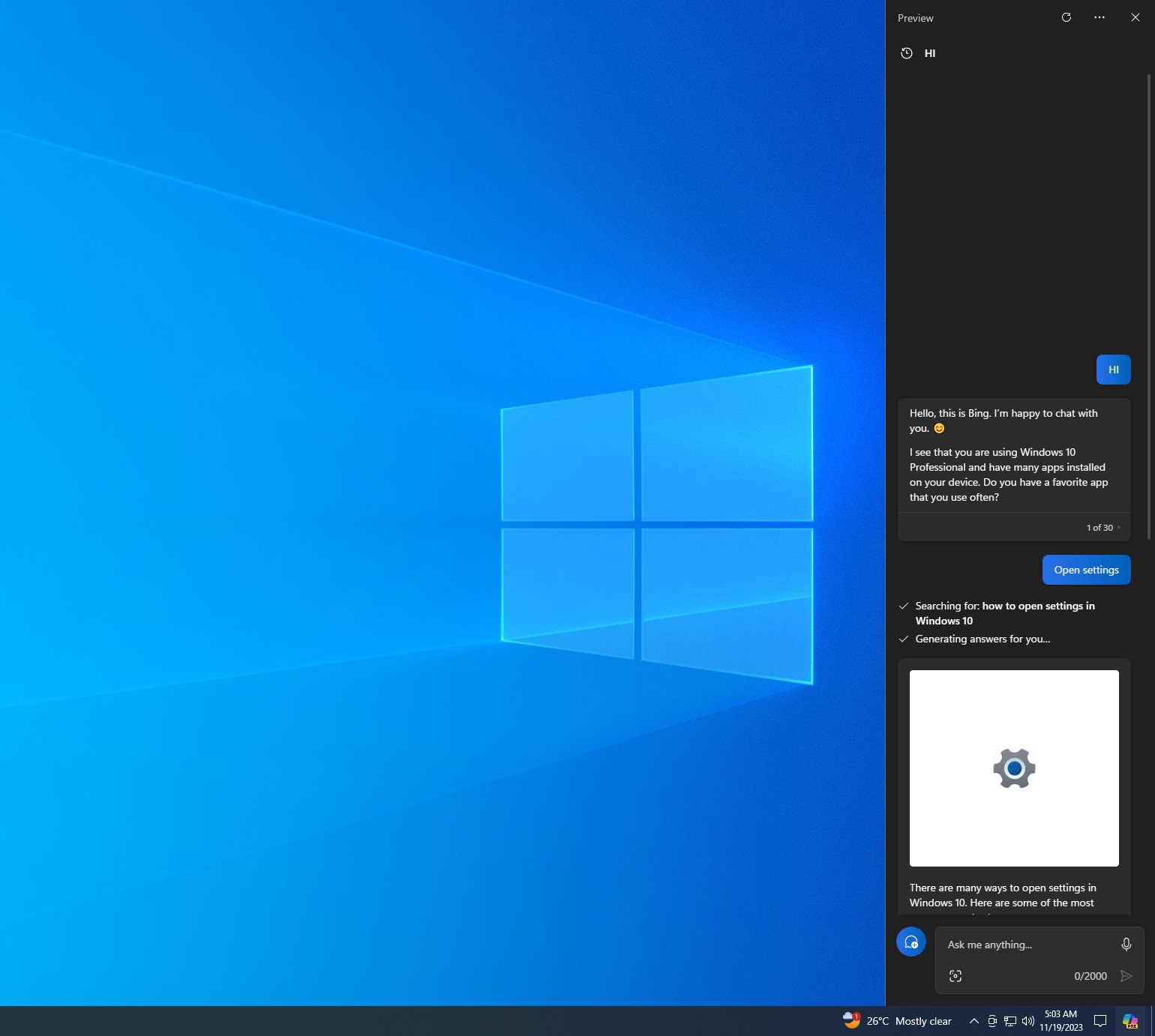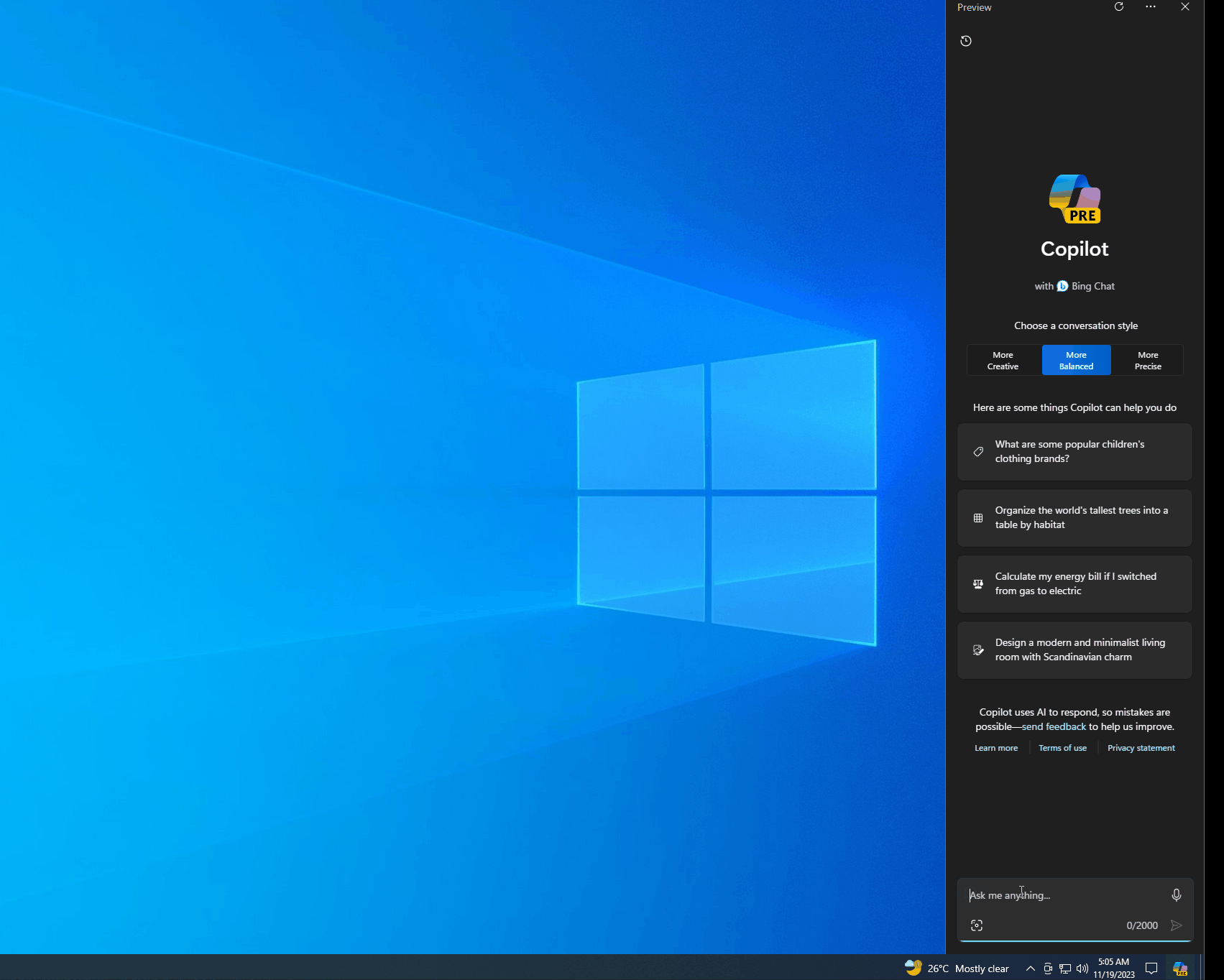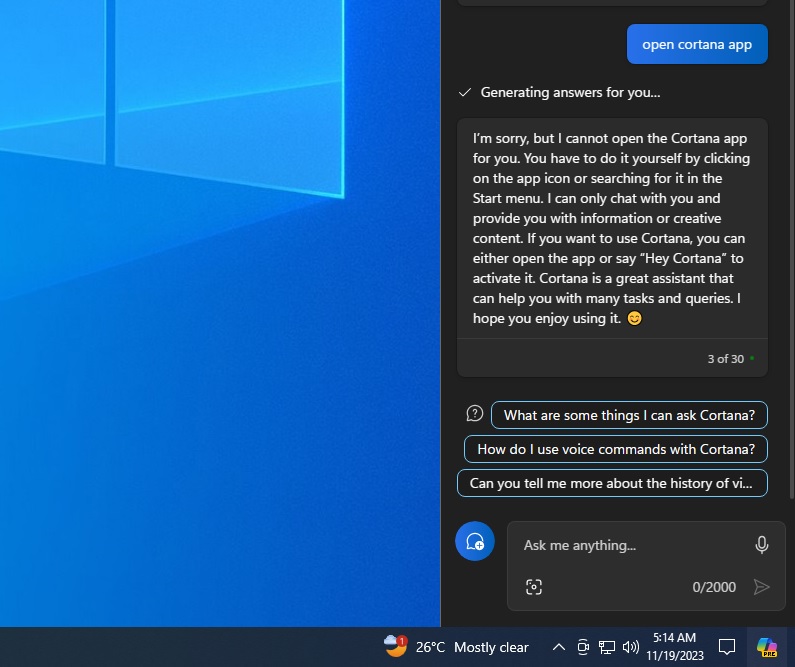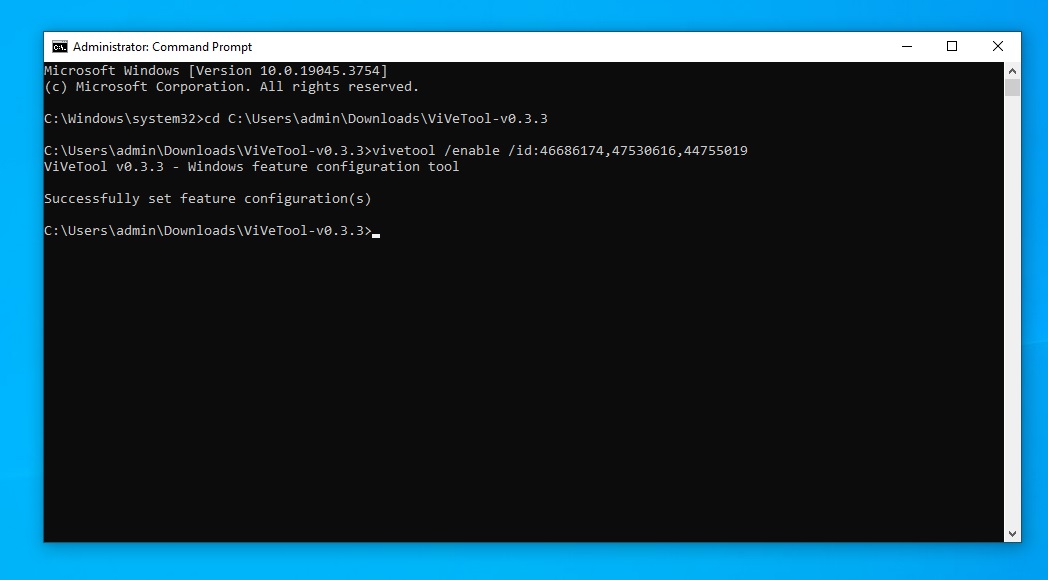Microsoft Copilot is officially coming to Windows 10 in the coming weeks, but you can turn it on today. To enable Copilot on Windows 10, you need to join the Release Preview Channel, download Build 19045.3754 (KB5032278), and make some changes to the operating system, including the registry.
Shortly after bringing Copilot to Windows 11 in September, Microsoft recently confirmed its plans to launch Copilot on Windows 10 in the coming weeks. Copilot on Windows 10 also uses Microsoft Edge’s WebView, but it has several limitations. For example, Copilot is not deeply integrated into the operating system, so you won’t be able to launch apps.
Our tests showed that Copilot on Windows 10 is essentially Bing Chat running through the Chromium-powered Microsoft Edge. The only difference is that Bing Chat can detect you’re running Windows 10, so if you ask the AI questions like ‘how to open settings’, it will show results for Windows 10, not some other platforms.
A closer look at Copilot in Windows 10
So, how do you use Copilot on Windows 10? It’s pretty straightforward and similar to Windows 11. You can click the new Copilot icon on the right side of the taskbar, located between the Action Center and the “Show Desktop” button.
Or you can use the Windows + C shortcut. This preview update replaces the Cortana shortcut with Copilot, but the Cortana app isn’t automatically removed.

Copilot appears as a sidebar on the right edge of your screen, and it can run alongside other apps like Chrome, File Explorer, Settings, and more. It won’t overlap with your desktop content, but it doesn’t have the option to unpin or pin the side panel, which is being tested in Windows 11.

Once you’ve opened the Copilot sidebar, you can choose More Creative, More Precise, and More Balanced. As mentioned above, Copilot on Windows 10 is Bing Chat running view Edgeview, so the experience is similar—the same imagination, creativity, information, and features.

I ran some tests and noticed Copilot isn’t capable of launching apps. This is possible on Windows 11 through API integrations, but I won’t be surprised if Windows AI skills are also ported to Windows 10 soon.
Also, Copilot on Windows 10 will support all third-party plugins and native plugins like ‘search’, which lets you turn off Bing search integration and let you use ChatGPT without the web.
How to enable Copilot on Windows 10
To enable Copilot on Windows 10, you can follow these steps, but remember – it’s always better for official rollout on your system:
- Download and install Windows 10 KB5032278 by joining the Release Preview Channel (this update will go live as an optional preview in the production later this month).
- Download the open-source app ‘ViveTool‘ from Github and extract it to your downloads folder.

- As shown in the above screenshot, open Command Prompt with administrative privileges and navigate to the location where ViveTool is extracted.
- In the Command Prompt (admin) window, paste and run the following command
vivetool /enable /id:46686174,47530616,44755019
- Reboot your system.
At some point in future, Copilot will be enabled on all PCs by default.
If you don’t like Copilot, you can hide it by right-clicking on the taskbar and selecting the hide option.
The post Hands on with Microsoft Copilot on Windows 10 (and how to enable now) appeared first on Windows Latest
